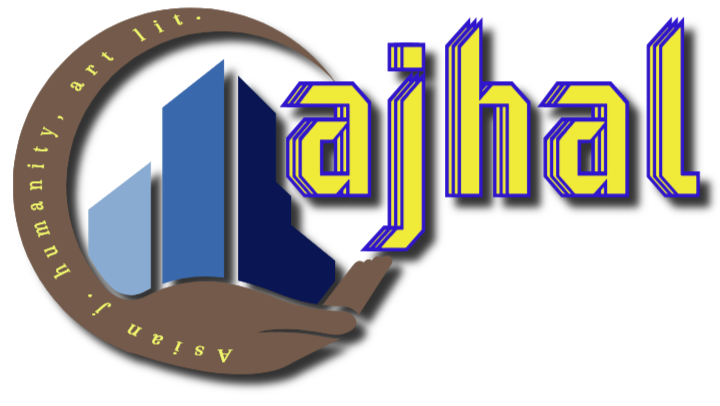Investigating the Prospects of Generative Artificial Intelligence
DOI:
https://doi.org/10.18034/ajhal.v5i2.659Keywords:
GenAI, Current Creation Process, Technological Company, Competing SystemsAbstract
In this exploratory work, we investigate cutting-edge techniques in machine learning known as Generative Artificial Intelligence (GenAI). The costs of trial and error during product development can be significantly reduced if faster, more affordable, and more accurate multi-scale materials simulations powered by fully generative artificial intelligence are available. Engineers have spent decades attempting to develop humanoid robots that are both practical and resemble people in appearance and behavior. Because it enables us to circumvent the inherent dimensionality of this obstacle, generative artificial intelligence has the potential to be a beneficial instrument for the current creation process. Moreover, the research underlines that generative artificial intelligence, capable of producing media such as text, images, and audio in response to prompts, appears to improve daily. In addition, numerous technological companies are currently building and releasing their competing systems.
Downloads
References
Blajina, O. (2016). Changes in Production by Artificial Intelligence. FAIMA Business & Management Journal, 4(3), 61-73.
Fatimaezzahra, M., mohamed, S., abdelaziz, E., & loubna, B. (2016). Towards Domain Ontology Creation Based on a Taxonomy Structure in Computer Vision. International Journal of Advanced Computer Science and Applications, 7(2). https://doi.org/10.14569/IJACSA.2016.070238
Galanos, V. (2017). Singularitarianism and schizophrenia. AI & Society, 32(4), 573-590. https://doi.org/10.1007/s00146-016-0679-y
Gutlapalli, S. S. (2016). An Examination of Nanotechnology’s Role as an Integral Part of Electronics. ABC Research Alert, 4(3), 21–27. https://doi.org/10.18034/ra.v4i3.651
Gutlapalli, S. S. (2017a). Analysis of Multimodal Data Using Deep Learning and Machine Learning. Asian Journal of Humanity, Art and Literature, 4(2), 171–176. https://doi.org/10.18034/ajhal.v4i2.658
Gutlapalli, S. S. (2017b). The Role of Deep Learning in the Fourth Industrial Revolution: A Digital Transformation Approach. Asian Accounting and Auditing Advancement, 8(1), 52–56. Retrieved from https://4ajournal.com/article/view/77
Mandapuram, M. (2016). Applications of Blockchain and Distributed Ledger Technology (DLT) in Commercial Settings. Asian Accounting and Auditing Advancement, 7(1), 50–57. Retrieved from https://4ajournal.com/article/view/76
Mandapuram, M. (2017a). Application of Artificial Intelligence in Contemporary Business: An Analysis for Content Management System Optimization. Asian Business Review, 7(3), 117–122. https://doi.org/10.18034/abr.v7i3.650
Mandapuram, M. (2017b). Security Risk Analysis of the Internet of Things: An Early Cautionary Scan. ABC Research Alert, 5(3), 49–55. https://doi.org/10.18034/ra.v5i3.650
Piipari, M., Down, T. A., & Hubbard, T. J. P. (2010). Metamotifs - a generative model for building families of nucleotide position weight matrices. BMC Bioinformatics, 11, 348. https://doi.org/10.1186/1471-2105-11-348
Stanton, C., & Clune, J. (2016). Curiosity Search: Producing Generalists by Encouraging Individuals to Continually Explore and Acquire Skills Throughout Their Lifetime. PLoS One, 11(9). https://doi.org/10.1371/journal.pone.0162235
Thodupunori, S. R., & Gutlapalli, S. S. (2018). Overview of LeOra Software: A Statistical Tool for Decision Makers. 技术与管理回顾, 1(1), 7–11. http://技术与管理回顾.移动/index.php/tmr/article/view/4
Tonelli, P., & Mouret, J. (2013). On the Relationships between Generative Encodings, Regularity, and Learning Abilities when Evolving Plastic Artificial Neural Networks. PLoS One, 8(11). https://doi.org/10.1371/journal.pone.0079138
Downloads
Published
Issue
Section
License
Copyright (c) 2018 Mounika Mandapuram, Sai Srujan Gutlapalli, Anusha Bodepudi, Manjunath Reddy

This work is licensed under a Creative Commons Attribution-NonCommercial 4.0 International License.















